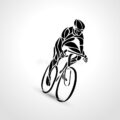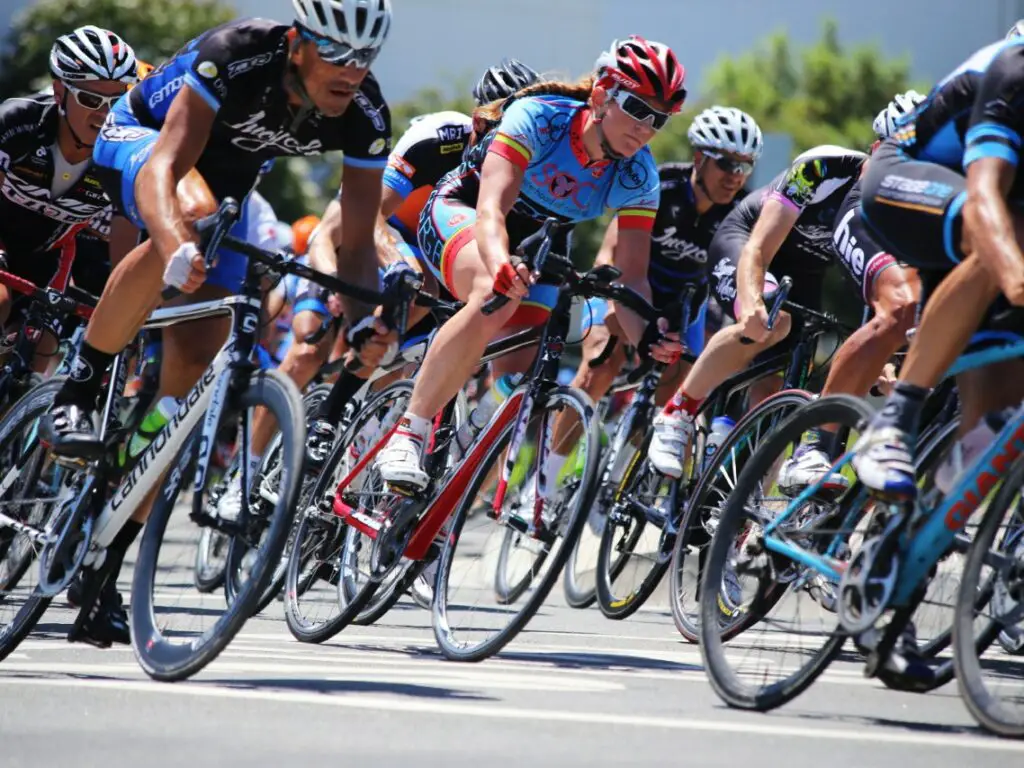How fast can pro cyclists sprint
The average sprint speed of a professional road cyclist that participates in events such as the Tour de France or The Olympics is 63.9 kph which can be sustained for between 9 to 17 seconds.
A professional female cyclist can average sprint speeds of 53.8 kph which they can sustain for between 10-30 seconds.
The very top professional cyclists have been clocked at higher speeds with the likes of Mark Cavendish clocked at up to 70.2 kph. With such a speed he was only the fourth fastest for that stage with others topping out at even greater sprint speeds.
WHAT IS THE FASTEST CYCLIST’S SPEED?
The fastest speed ever achieved in the world of cycling was 183.932 mph. The record-breaking speed was achieved by Denise Mueller-Korenek, an American female cyclist riding a custom-made bike on the Bonneville Salt Flats in Utah in September 2018.
TOUR DE FRANCE AVERAGE SPEED IN MPH
The average Tour de France professional cyclist can attain speeds of between 25 to 28 mph on flats as compared to just 17 to 18 mph for the average nonprofessional cyclist.
On mountainous routes, the professional cyclist at the Tour de France averages between 21 to 25 mph which is double what the average cyclist will do at between 9 to 10 mph.
WHAT IS THE FASTEST DOWNHILL SPEED FOR PRO CYCLISTS?
The downhill speed of professional cyclists varies from rider to rider as most cyclists have a specialization. However, most pros will ride between 40 mph or 60 kph on an 8-degree gradient and between 50 mph or 80 kph on a 13-degree gradient.
HOW DO PRO CYCLISTS RIDE SO FAST?

There are many factors that make the professional cyclist much faster including their age, weight-to-power ratio, gear shifting skill, custom-made bikes, and training among other things.
However one of the major ways that pro cyclists sprint much faster has to do with their expertise in slipstreaming and drafting.
Slipstreaming and drafting have to do with one cyclist cycling just behind another to protect themselves from some air resistance which is usually the largest force cyclists have to overcome.
If you are riding in a Peloton, the front group can form a wall and take much of the wind and air resistance. This means that the riders at the back have to expend much less energy to keep up.
Research has shown that cyclists drafting or slipstreaming at the middle of the Peloton in professional teams at events such as the Tour de France experience 5 to 10% less air and wind resistance as compared to those leading the Peloton.
At events such as the Tour de France, there are many sprint finishes in which pos such as Mark Cavendish are inside a Peloton until the last few hundred meters, after which their teammates make way.
This means they can save energy by having less wind and air resistance and hence can use that stored energy for that last winning sprint to the finish line.


